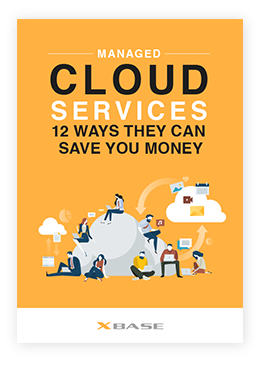Countless businesses are already taking advantage of the cost efficiencies cloud computing provides. They’ve disregarded the various myths surrounding the tech and are able to manage their costs properly. If you’ve done your research and have decided to move to the cloud, then follow this checklist to enjoy a successful migration:
⬜ Choose someone who’ll lead your migration efforts
That someone would become a migration architect, a systems architect who’ll create and implement a plan covering the entire migration process. They will have to:
- Determine what the firm needs from the cloud solution
- Create strategies for migrating data, considering:
- What needs to be migrated first
- How to transition production processes that will use cloud resources
With so many technical plans to be drafted and so many decisions to be made, a migration architect overseeing everything is crucial to the project’s success.
⬜ Determine how deep you want your apps to be integrated into the cloud
Moving your apps to the cloud means letting them run on a cloud service provider’s (CSP) servers instead of your own. This frees your IT team from having to administer so many IT systems and handle hardware provisioning for every new app they create. Additionally, reputable CSPs deliver reliable expertise, follow industry best practices, and offer incredible scalability at much lower rates than if your company tried to deploy apps itself.
You can simply move your apps to the cloud without making fundamental functional changes to them. Called shallow cloud integration, this just lets you use your apps in their new cloud environment. On the other hand, you can also dramatically alter your apps so that these can take advantage of cloud capabilities. Deep cloud integration lets you take advantage of auto scaling (i.e., the automatic adjustment of server capacity for steady app performance and predictable costing), dynamic load balancing, and serverless computing, among others.
⬜ Exercise due diligence when choosing a cloud service provider
Moving to the cloud means shifting computing processes, data delivery, and data storage away from your on-site computers to machines being managed and maintained by a third party. It is therefore absolutely crucial that you choose a reliable CSP. Look for one that has the following:
- Redundant high-speed and high capacity links that ensure you’ll always have access to your apps and data
- Redundant servers that can take the place or share the load of primary servers in case the latter fail, suffer downtime, or bear excessive traffic
- Robust data backup and disaster recovery systems
- Power generators capable of maintaining critical operations during power outages
- 24/7/365 proactive cybersecurity and network performance monitoring
- Technical expertise in data regulations compliance
- A long track record of service excellence
If ever you feel uncertain that your CSP can deliver 99.9% uptime, then look into using two or more providers.
⬜ Define cloud migration KPIs
Use key performance indicators (KPIs) to check progress against projections. Doing this can reveal previously unnoticed problems with your app, as well as help you recognize when you’re actually finished with your migration.
⬜ Set baselines of performance
Measure the pre-migration performance of your apps to see if you meet service improvement projections post-migration.
Download our free eBook!
Get a better idea of what managed cloud services can do for your business by reading our eBook: Managed Cloud Services: 12 Ways They Can Save You Money.
⬜ Strategize the order in which you’ll migrate app components
Normally, dependencies exist between applications, so it may be rare for you to migrate entire apps at once without adversely affecting business processes. You’ll need to create dependency diagrams so that you can determine the order in which you’ll migrate app parts.
⬜ Refactor as necessary
To refactor an application is to change its code or internal structure without altering how it behaves. Doing this lets your apps work in the cloud just like in your on-premises servers.
⬜ Create a data migration plan
So far, we’ve only been discussing moving apps to the cloud, but the data these use and produce need to be migrated, too. Whether your data is moved from on-premises servers to the cloud before or after your applications, computing performance may suffer for as long as the two are on different platforms.
To address this, you can either:
- Move data from your on-premises database to a cloud-based one while providing access only to the former. Once that’s complete (and your apps are on the cloud as well), you can disable the former and make the latter your default database.
- Sync on-premises data to the cloud, and also sync newly created cloud-based data onto on-premises servers for the sake of users who have yet to shift to the cloud. Once everybody’s on the cloud, remove the on-premises database.
- Let the data migration services of Microsoft Azure or Amazon Web Services handle it for you.
⬜ Move staff to your new setup
Depending on how complex your app and datastore design is, you might want to switch production processes from your legacy on-premises setup to the cloud either all at once or in phases. Let a few staff members try out the new cloud-based system first, iron out the kinks, then add more users until you eventually have everyone there.
⬜ Check how you’re allocating cloud resources to your applications
The cloud is built to allow adjustments to resource allocation at a moment’s notice (such as assigning more servers to a busy app), so make sure that you have the app architecture in place to allow such scaling.
The cloud is now the place to be for businesses. To take full advantage of this technology or to explore Private Cloud alternatives, rely on the Exponentially Better™ cloud services of XBASE Technologies.
Like This Article?
Sign up below and once a month we'll send you a roundup of our most popular posts

